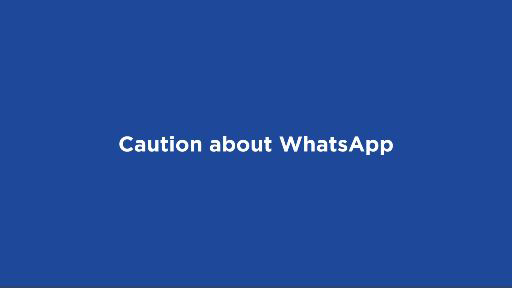3.1 WhatsApp in education: a help or a hindrance?
The rapid expansion of WhatsApp among students has meant that universities are still catching up with what it means for a student’s study experience. During a recent research project, students at the Open University were interviewed about the ways in which they use online communication to form a community with each other. WhatsApp emerged as a popular app. Watch the video to learn from Cath Brown who describes her personal experience of WhatsApp and she now manages that interaction.

Transcript: Video 14 Caution about WhatsApp
As the video suggests, there were many negatives to its use, however, students also reported a great deal of positive experiences about the app, particularly if engagement was carefully managed. In this next activity, you will explore in more detail how WhatsApp divided student opinion.
Activity 7 The threat v the opportunity of WhatsApp
Below are a series of quotes based on students’ experiences of using Whatsapp as part of their studies. It’s important to note that experiences in WhatsApp groups vary significantly from group to group. You will have had positive and negative experiences. In this activity you will consider particularly how these groups work in the educational setting.
Read each of the quotes below and reflect on your personal use of WhatsApp by entering your thoughts into the response box below. To view these, click on each box below. Alternatively, click on the ‘show description’ option.
Discussion
As these quotes have illustrated, for each student who had a positive experience on WhatsApp, there was a student who had a negative experience. The individual nature of these groups, and of the individual experience of WhatsApp more generally, mean it’s hard to write generic guidance for students on how to make the best use of WhatsApp. Like all social media engagement, ensuring that you gain more from your participation in WhatsApp should be at the core of your thoughts about the use of it as a tool in your learning.
It is worth noting that as most WhatsApp groups operate outside of the university network, it is hard for universities to monitor or control activities in these groups. The important thing about social media use, including WhatsApp, is to realise you do have a choice about how you use it. As this student summed up.
‘I found it’s a mixed bag. Sometimes you can have something said that’s really helpful and other times, it’s just I don’t need this negativity here so I only tend to go on there when there’s something specific that I’m looking for.’

